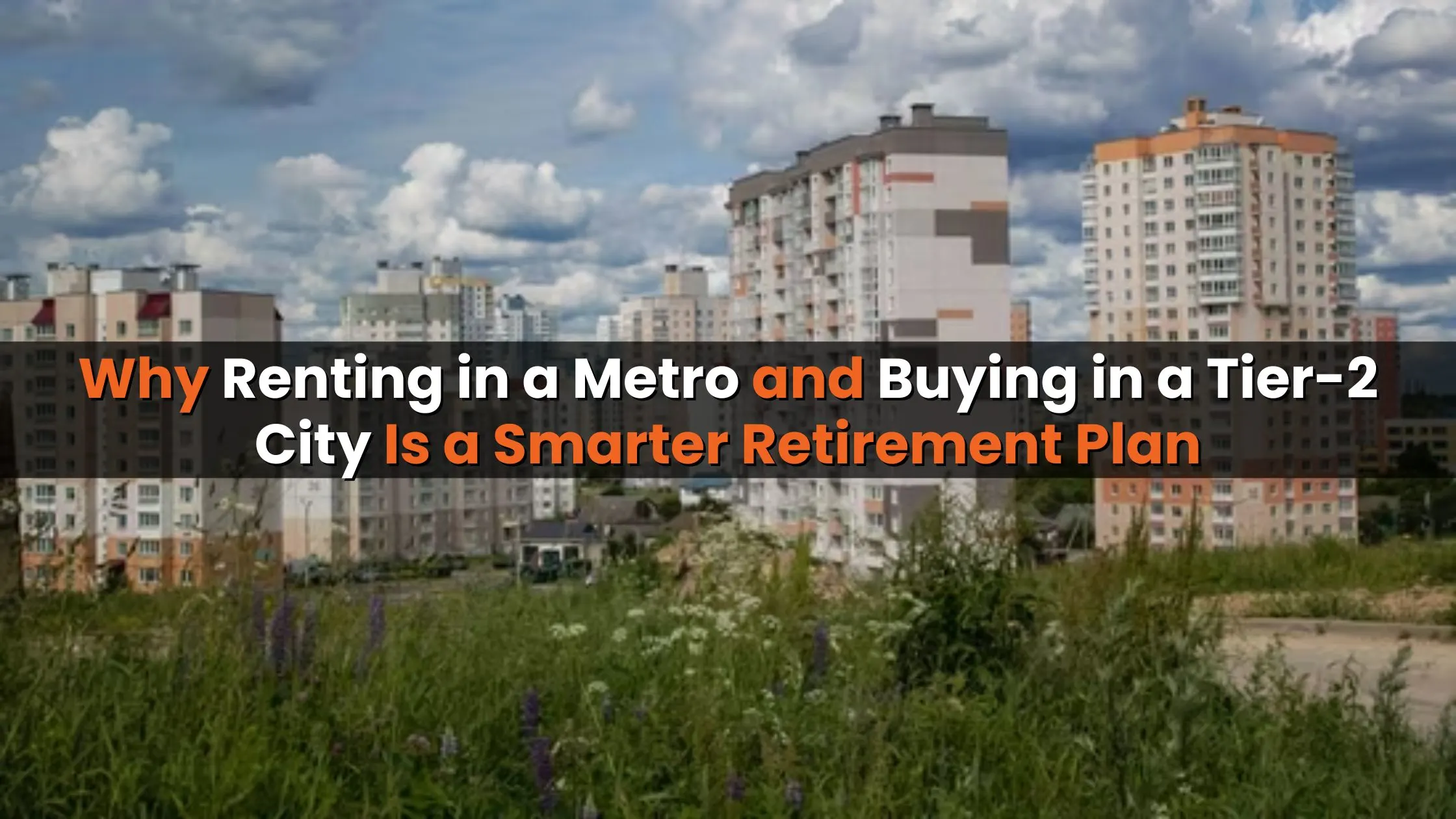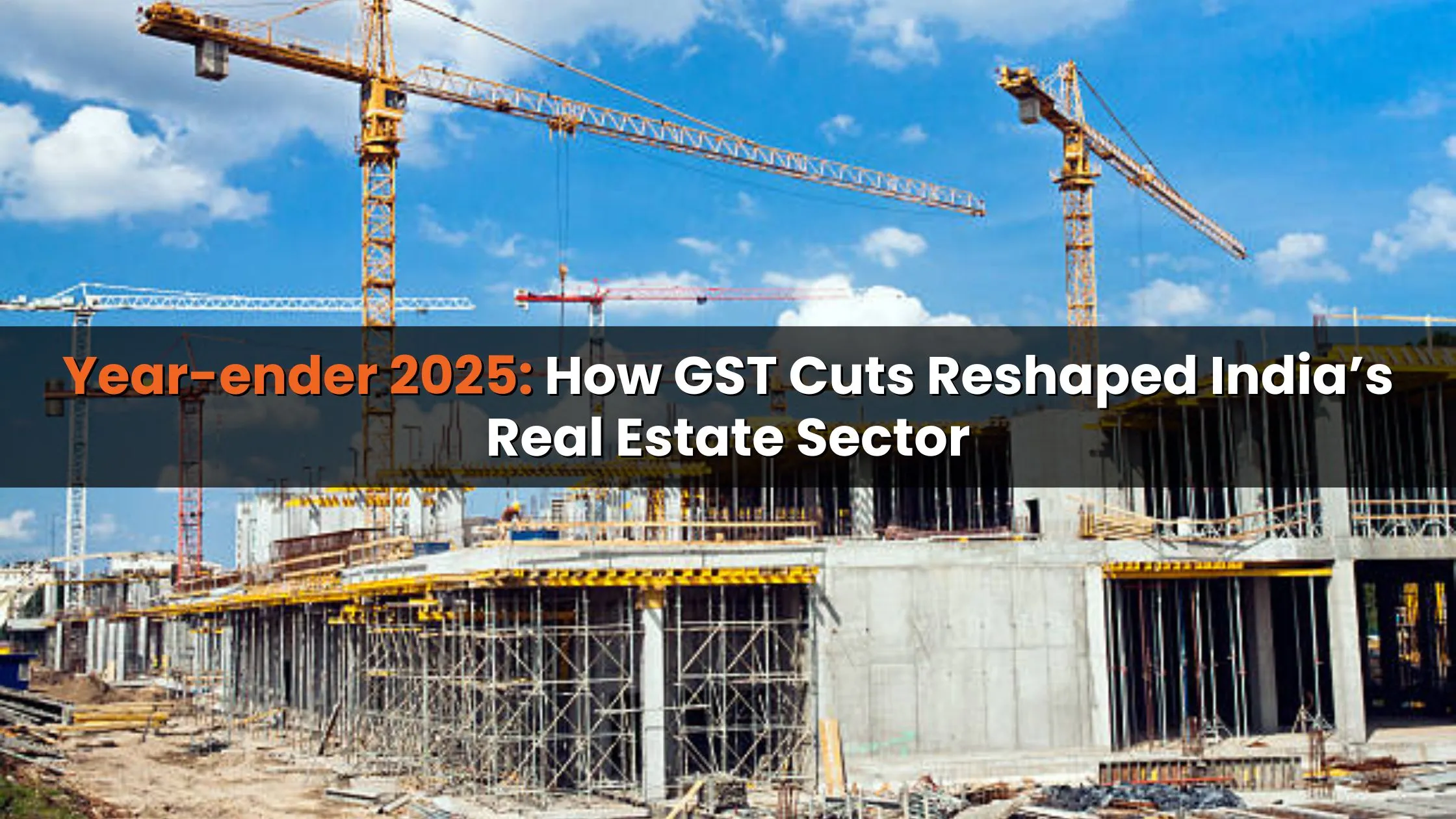Table of Content
For many working professionals, the dream of owning a home in India’s major metros feels increasingly out of reach. Skyrocketing property prices, high EMIs, and rising living costs make it difficult to balance financial stability with homeownership. Against this backdrop, a new strategy has emerged rent in a metro for convenience, but buy in tier-2 cities to secure long-term financial and retirement goals.
This approach not only offers flexibility during one’s working years but also ensures a stable, affordable retirement home in the future.
A Real-Life Example: Metro Renters, Tier-2 Buyers
Consider Anil and Shweta, both in their late 30s and working in Bengaluru’s tech sector. Buying a modest 2BHK apartment near their offices would cost over ₹1.8 crore, with EMIs exceeding ₹1.3 lakh a month. Instead of stretching their finances, the couple pays ₹55,000 in rent for a centrally located apartment.
At the same time, they invested in a spacious 3BHK in Lucknow at ₹6,500 per sq. ft., costing about ₹75 lakh. Their strategy is clear: enjoy the convenience of living near work while building a long-term asset in one of India’s growing tier-2 cities. Over time, they plan to settle there after retirement, turning today’s smart investment into tomorrow’s comfort.
Why Metros Are Becoming Unaffordable
The affordability gap in metros is widening. According to ANAROCK Research, average residential prices across the top seven cities rose by more than 50% in just two years—from ₹6,001 per sq. ft. in Q2 2023 to nearly ₹9,000 per sq. ft. by Q2 2025.
For middle-income professionals, this surge makes property ownership in metros a financial strain. The monthly burden of large EMIs often limits liquidity, disrupts lifestyle goals, and reduces the ability to invest in other wealth-building avenues. Renting, therefore, becomes a practical choice in metros offering location flexibility without locking into long-term debt.
The Case for Tier-2 Cities
While metros see spiraling costs, tier-2 cities present a more balanced picture. Here’s why they’re increasingly attractive to investors and future retirees:
- Lower Entry Costs: Property prices are typically one-third or even one-fourth of metro averages, making them accessible for middle-class buyers.
- Higher Percentage Gains: Even a modest rise in prices translates into significant percentage growth because the base price is lower.
- Infrastructure Boom: Cities like Ahmedabad, Indore, Coimbatore, Lucknow, and Jaipur are witnessing massive improvements in transport, connectivity, and urban planning.
- Industrial and IT Growth: Many tier-2 cities are emerging as job hubs, supported by government investment corridors and private sector expansion.
Together, these factors make tier-2 cities ideal for building wealth and planning retirement without overstretching finances.
Also Read: Bangalore, NCR, and Other Key Cities Likely to See Housing Sales Growth of 4%–25% in Q2 2025
Retirement Planning Advantage
Investing in tier-2 cities isn’t just about affordability it’s also about lifestyle and long-term security. Retirees benefit from:
- Lower Cost of Living: Daily expenses, healthcare, and services are more affordable compared to metros.
- Better Quality of Life: Less congestion, cleaner air, and a stronger sense of community enhance retirement living.
- Dual Benefit of Returns: If not used immediately, the property can be rented out to generate income until retirement.
- Peace of Mind: Knowing there’s a ready home in a growing city ensures both emotional and financial security.
For many, the decision to invest early in tier-2 cities is a retirement hedge that pays off both financially and personally.
Expert Insights and Market Data
Market studies consistently highlight the affordability gap. ANAROCK’s survey shows over 80% of buyers now consider rising prices a major concern, especially in metros. Meanwhile, data indicates steady demand growth in tier-2 cities, driven by returning NRIs, millennial buyers, and retirees seeking value-for-money investments.
With infrastructure projects such as regional airports, metro rail extensions, and smart city initiatives, these markets are expected to deliver sustainable appreciation over the next decade.
Conclusion
The strategy of renting in metros while investing in tier-2 cities combines the best of both worlds convenience and flexibility today, financial stability and security tomorrow. For professionals who want to balance career demands with retirement planning, this dual approach offers a smart pathway.
By unlocking the growth potential of tier-2 cities, homebuyers can ensure that while they rent where they work, they also own where they want to retire an investment that delivers both lifestyle and peace of mind.







Ans 1. Renting in a metro allows professionals to live close to work without committing to high property prices and hefty EMIs. This approach provides flexibility, reduces financial strain, and frees up capital for investments elsewhere, such as in more affordable tier-2 cities.
Ans 2. Tier-2 cities offer lower property costs, faster percentage appreciation, improving infrastructure, and emerging job hubs. Investing there allows individuals to secure a comfortable retirement home while potentially earning rental income until they retire.
Ans 3. Yes, this strategy balances current convenience with future security. While renters enjoy prime metro locations without large EMIs, investments in tier-2 cities benefit from lower entry costs, long-term capital appreciation, and the option to generate rental income.
Ans 4. Cities like Lucknow, Jaipur, Indore, Coimbatore, and Ahmedabad are showing strong growth due to infrastructure development, urban planning, and industrial or IT expansion, making them ideal for long-term investment and retirement planning.
Ans 5. Property in tier-2 cities is typically one-third or even one-fourth the cost of equivalent properties in metros. This affordability allows middle-class buyers to invest in larger or more modern homes without stretching their finances.
Ans 6. Infrastructure developments such as regional airports, metro extensions, smart city projects, and industrial corridors enhance connectivity and livability. These improvements attract residents and businesses, driving property demand and price appreciation.
Ans 7. Owning a property in a tier-2 city ensures a ready home with lower living costs, a cleaner environment, and a better quality of life after retirement. Additionally, if the property is rented out before retirement, it generates income and financial security.
Ans 8. While particularly beneficial for those unable to afford metro properties or preferring flexibility, it suits any professional who wants to balance career convenience with long-term investment in affordable, high-growth areas.
Ans 9. Risks include market fluctuations in tier-2 cities, delays in infrastructure projects, and the need for careful selection of locations and developers. However, thorough research and planning can mitigate these concerns.
Ans 10. It allows individuals to live conveniently in metros during their working years while investing in tier-2 cities to secure an affordable, comfortable home for retirement. This balances day-to-day convenience with long-term financial and lifestyle goals.